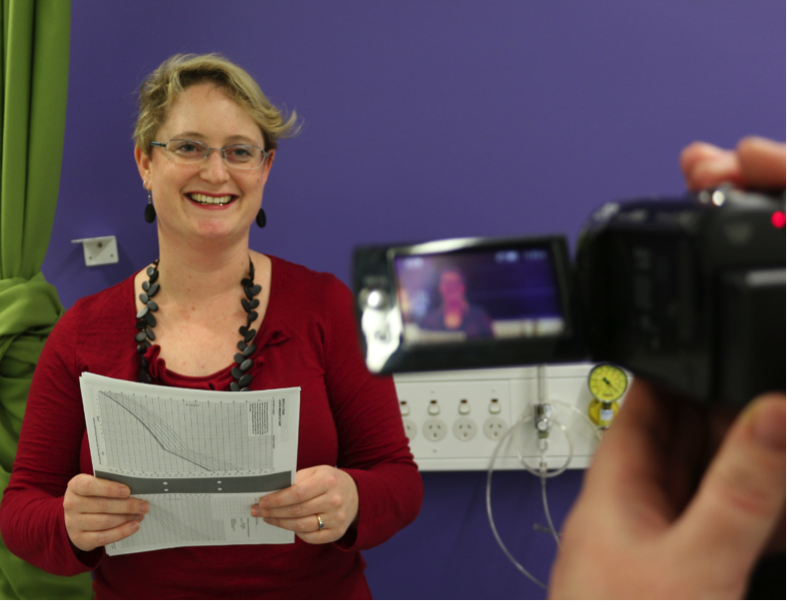
Rebecca Disler filming a clinical handover
|
Lecturer: Faculty: Project: Keywords: |
By using multimedia resources and collaborative activities that model communication behaviours in a clinical setting, Rebecca Disler is looking to improve students’ understanding of the principles and importance of accurate information transfer during handovers. What the project is aboutIn professional health contexts, a clinical handover is the “transfer of professional responsibility and accountability for some or all aspects of care for a patient, or group of patients, to another person or professional group”. An essential requirement of handovers is the transfer of succinct, accurate and relevant clinical information. This project centres on students using multimedia resources designed by the project team that models communication behaviours in these clinical contexts. Why the project is being introducedCommunication in the clinical health setting is a challenge for undergraduate nursing students, particularly those from culturally and linguistically diverse backgrounds. Even for those who have English as their first language, knowing how to critically engage with information, and being able to accurately transfer the appropriate clinical information – especially where people’s lives and wellbeing are at stake – is fundamental to safe and effective health management, and an essential element of professional nursing practice.
How the project is being implementedThroughout their studies, students engage in activities that mirror the clinical environment and assist them to develop the communication skills they require to successfully exchange information.
Working in groups, students are required to identify and extract the essential information, clarify any unknown information with their teacher and document the information within the introduced ISOBAR framework (Identification–Situation–Observations–Background–Action–Response).
Challenges and considerationsDeveloping quality multimedia assessment items takes time, so it was important to start planning early and to consider carefully any changes to assessment items.
|

